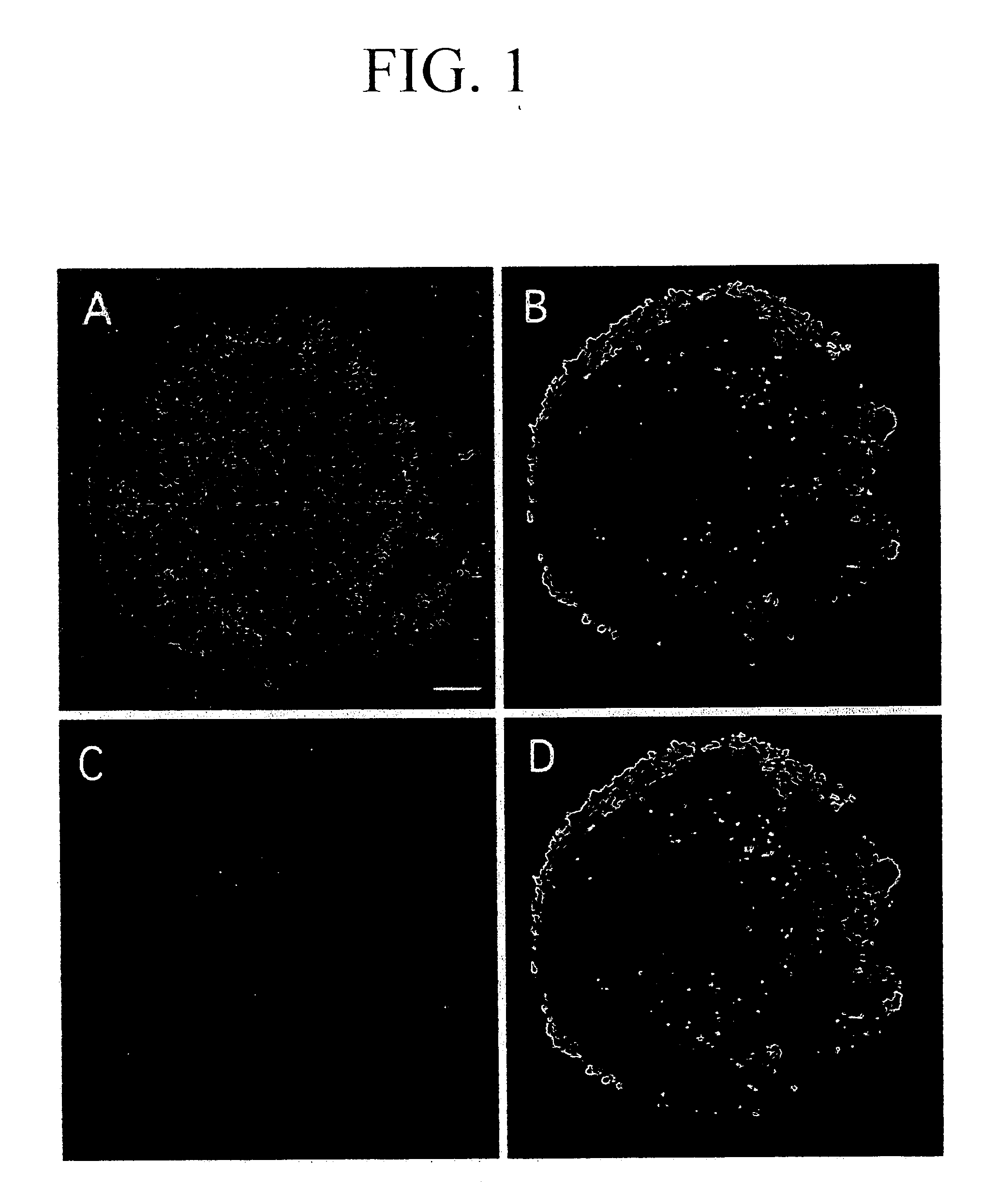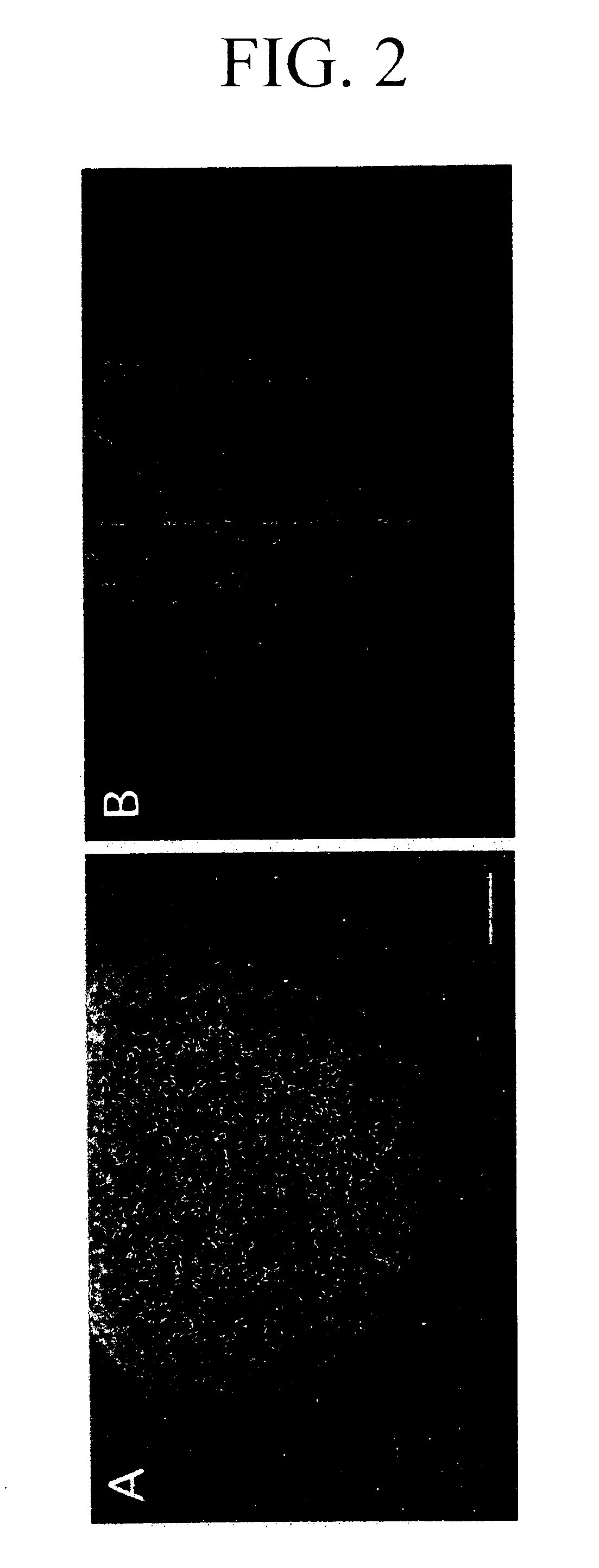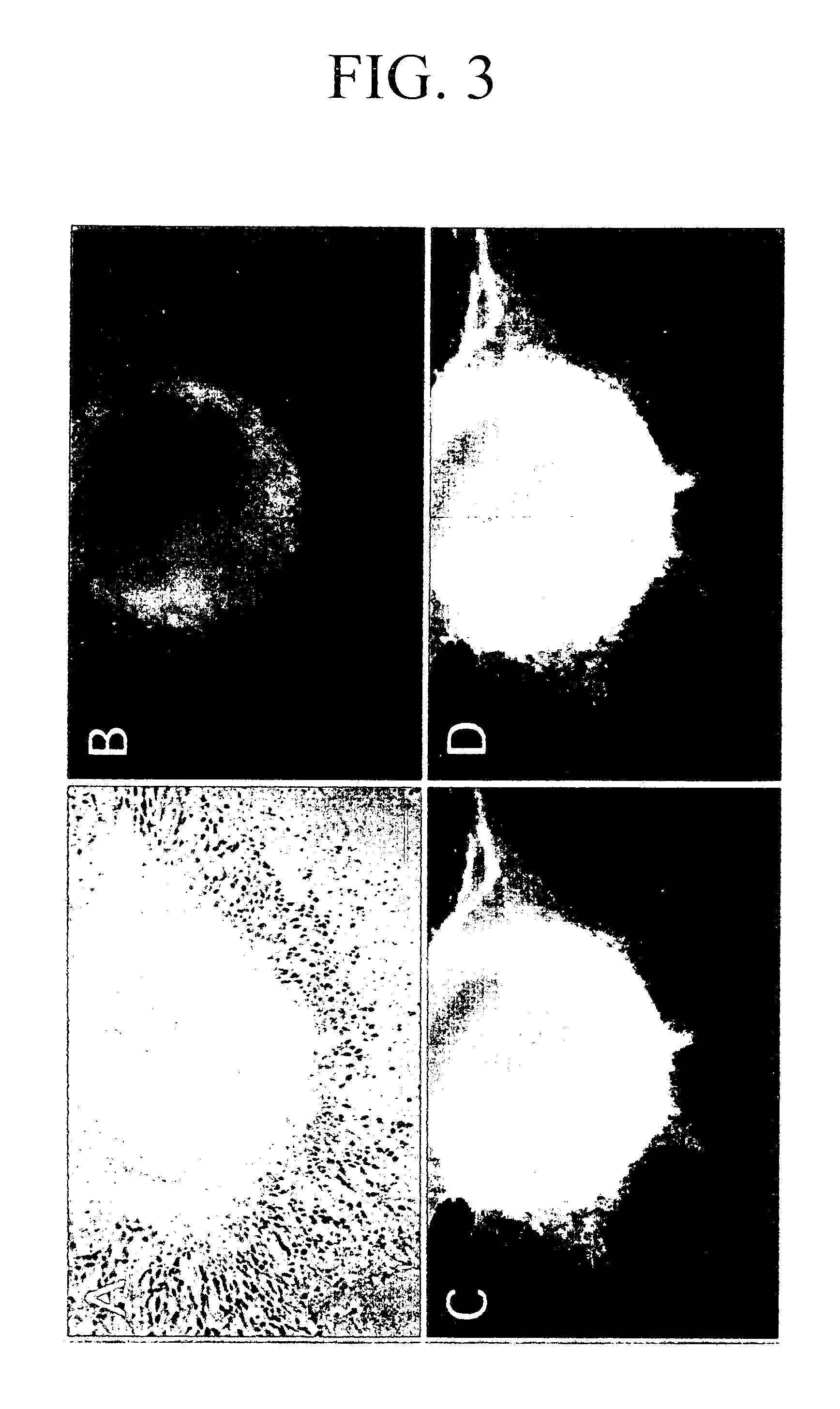Process for producing nerve cells
a neural cell and process technology, applied in the field of neural cell production, can solve the problems of not being suitable for the purpose of requiring a large amount, unable to obtain sufficient amounts of cells for use in regenerative medicine, and unable to achieve the effect of large amount and stable therapeutic
- Summary
- Abstract
- Description
- Claims
- Application Information
AI Technical Summary
Benefits of technology
Problems solved by technology
Method used
Image
Examples
example 1
Preparation of Neural Stem Cells
[0140] As embryonic stem cells, there was used HK cell strain (passage number: less than 10) established from C57BL / 6 mouse blastocysts (3.5 days after the confirmation of vaginal plug) in accordance with a conventional method. The above-mentioned HK cells were small in the passage number, less likely to differentiate spontaneously.
[0141] Also, fibroblasts prepared from a syngenic mouse of the day 14 of pregnancy were cultured until the fibroblasts became confluent in DMEM medium containing 10% (w / v) fetal calf serum (FCS). Next, mitomycin C (1 μg / ml) was added to the cell culture obtained, and thereafter the cells were incubated for 3 hours to give inactivated cells. The inactivated cells were washed with a phosphate buffered saline, and then treated with trypsin. The cells obtained were plated on a gelatin-coated plate to give a feeder cell layer. As the above-mentioned plate, each of a 60 mm plate (1.5×106 cells / plate) and a 4-well plate (3×105 c...
example 2
Differentiation into Neurons
[0152] Suspension culture of the in which neural stem cells were differentiated on a surface layer [the SCS obtained in Example 1 mentioned above (4 days of suspension culture)] was carried out in a mixture of the astrocyte conditioned medium and the astrocyte basal medium (ratio by volume=1:1) in a CO2 incubator in an atmosphere of 37° C., 5% CO2 in the air and 100% humidity.
[0153] In order to examine the change in the differentiated states in the SCS with the passage of time, the suspension-cultured SCS was immobilized in the same manner as described above with a one- to four-day culture.
[0154] An antibody TUJ1 recognizing class III β tubulin, a marker for juvenile neurons, was used as an index of differentiation into neurons. Immunofluorescent histochemical observation was carried out by an upright fluorescent microscope (trade name: Eclipse E800) manufactured by Nikon.
[0155] As a result, cells weakly reacting with TUJ1 were observed in the inner p...
example 3
Improvement in Neuronal Differentiation Method
[0158] Neural stem cells could be prepared and differentiated into juvenile neurons by carrying out suspension culture of the SCS in a mixture of the astrocyte conditioned medium and the astrocyte basal medium.
[0159] Next, the culture optimal conditions were studied for efficiently carrying out differentiation from the neural stem cells formed on the SCS surface layer into the neurons.
[0160] The surface of a culturing side of a polylysine-coated culture dish was further treated with 0.1 mg / ml laminin or 10 to 20-fold diluted MATRIGEL™ [manufactured by BD Bioscience] to give an adhesive culture substratum. The SCS for which the suspension culture was carried out for 4 days was aspirated with a glass capillary, transferred to an adhesive culture dish to which the astrocyte conditioned medium was previously added, and the mixture was cultured in a CO2 incubator for several hours in an atmosphere of 37° C., 5% CO2 and 100% humidity. As a ...
PUM
| Property | Measurement | Unit |
|---|---|---|
| time | aaaaa | aaaaa |
| humidity | aaaaa | aaaaa |
| humidity | aaaaa | aaaaa |
Abstract
Description
Claims
Application Information
 Login to View More
Login to View More - R&D
- Intellectual Property
- Life Sciences
- Materials
- Tech Scout
- Unparalleled Data Quality
- Higher Quality Content
- 60% Fewer Hallucinations
Browse by: Latest US Patents, China's latest patents, Technical Efficacy Thesaurus, Application Domain, Technology Topic, Popular Technical Reports.
© 2025 PatSnap. All rights reserved.Legal|Privacy policy|Modern Slavery Act Transparency Statement|Sitemap|About US| Contact US: help@patsnap.com



